Baan Rim Klong – How is Palm Sugar made?
November 20, 2012

In Thai cuisine, palm sugar is used in cooking many dishes, be it desserts or curries. Good quality Thai palm sugar is light brown in color, and hard, but not completely rock hard.
The color of palm sugar is important, because if it is too dark, it may be smoky Indonesian sugar instead of palm sugar. And if it is too light, it may mean white sugar have added to the mixture, since white sugar or cane sugar is far cheaper than palm sugar.
I mentioned I really enjoyed my Bangkok trip this year because I get to understand the culture and history of the country instead of doing mainly shopping. I had a chance to visit Baan Rim Klong to learn about the process of making palm sugar as well as Kanom Tom Kao, a popular Thai dessert.

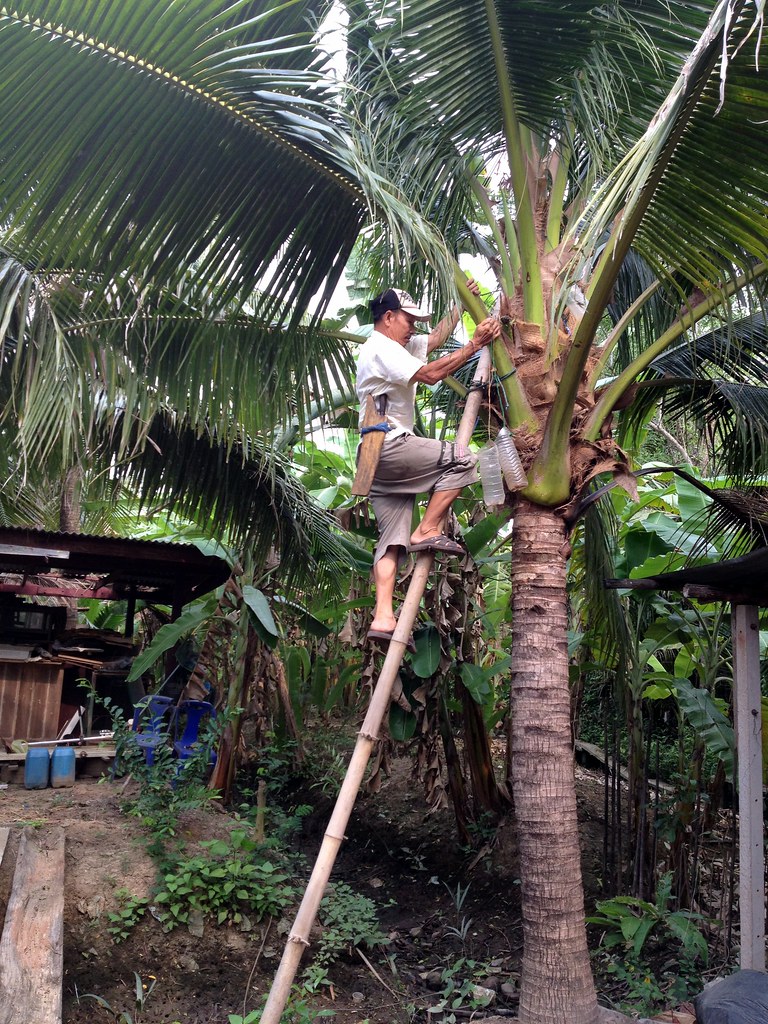
Palm sugar is a natural sweetener made from the sap of palm trees. When the palms are about 15 to 20 years old, they start flowering and it is only then that they produce the sweet sap from which palm sugar is made.
Palm tappers have to be extremely agile to climb up the palm trees. They basically cut the steams and put plastic bottles close to the cut to collect the sap overnight. The owners were telling us that, they used to use bamboo to collect the sap but the naughty squirrels will steal the sap to drink, so they had to change to plastic bottles. Because plastic bottles are slippery, so the squirrels are not able to bite through the bottles to drink the sap.
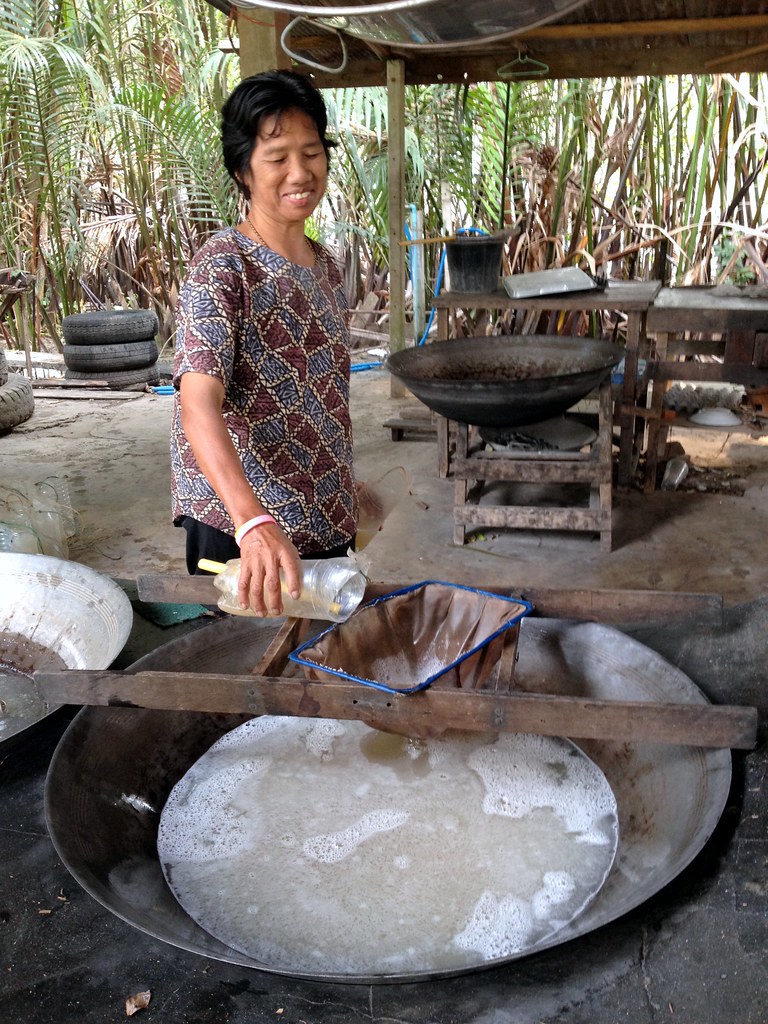
Here is Aunty Ord, she is 60 years old. She has been helping her husband to make palm sugar for 30 over years. Her husband, Sorn (73 years old) is an expert palm sugar maker.
Anyway, once the sap is collected in the plastic bottles, they are poured into the wok via a filter. The fresh sweet palm sap is boiled down shortly after collection to make palm syrup and palm sugar. This has to be done immediately after the sap is being collected. If not, it ferments into a sour, potent brew which is poisonous. The whole boiling process takes about an hour.

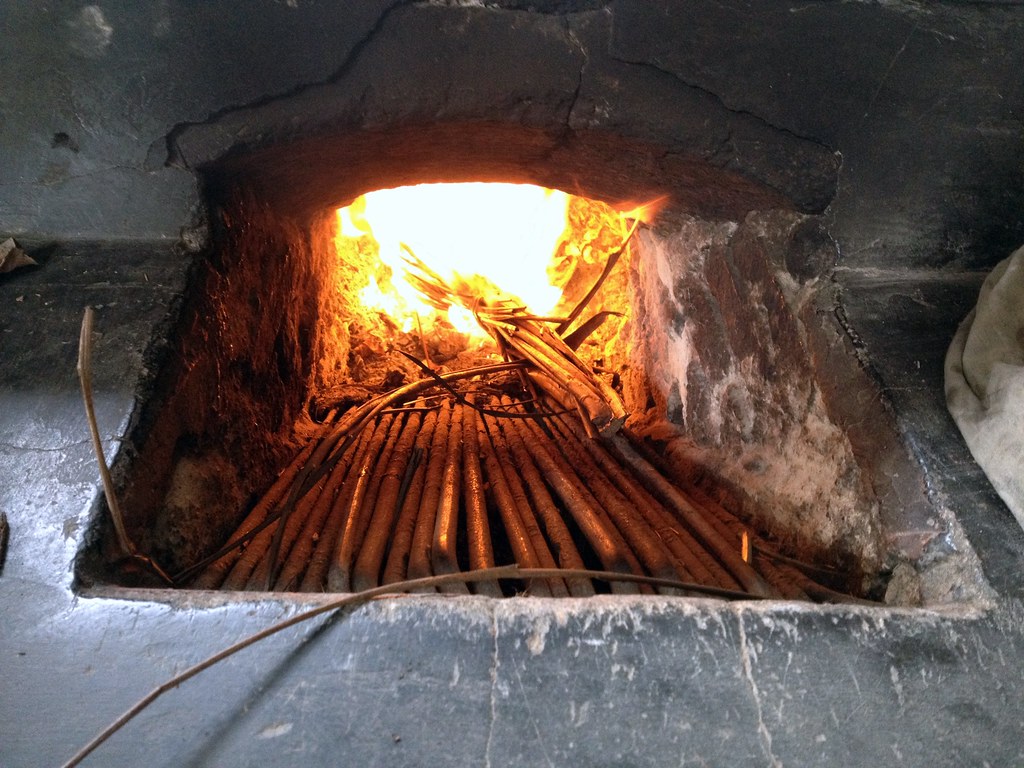
By the way, they recycle the palm tree wood and leaves by burning them and using them to boil the palm sugar.
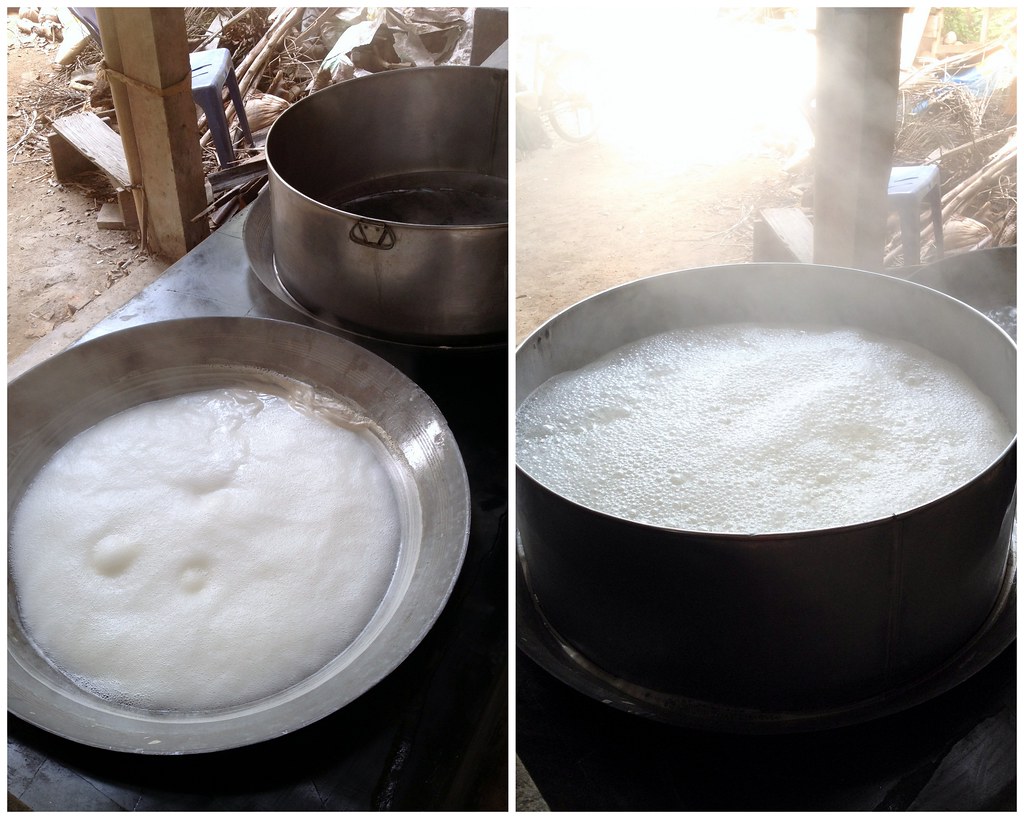
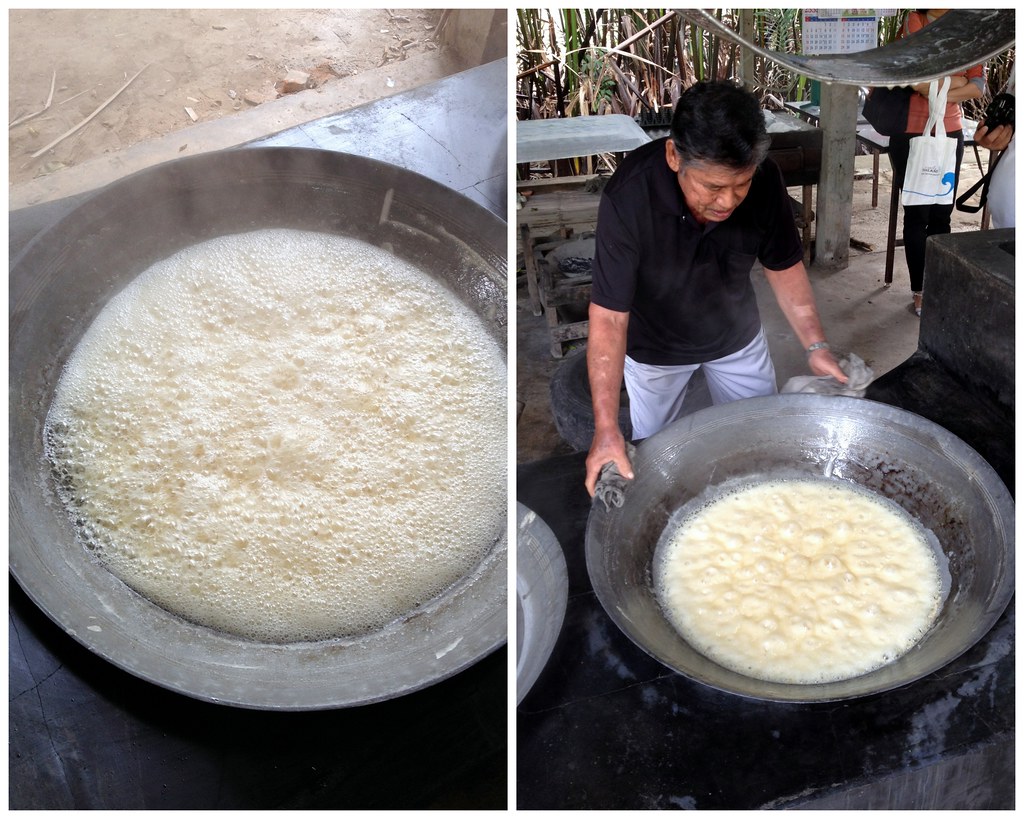
When it starts bubbling, a big round mould is placed on top of the wok to prevent the juice from overflowing. Once it changes to pale yellow colour, the mould is removed and it is cooked to a caramel-like consistency. At this stage, the boss will turn the wok to mix the palm sugar. By the way, this is the expert palm sugar maker Sorn.
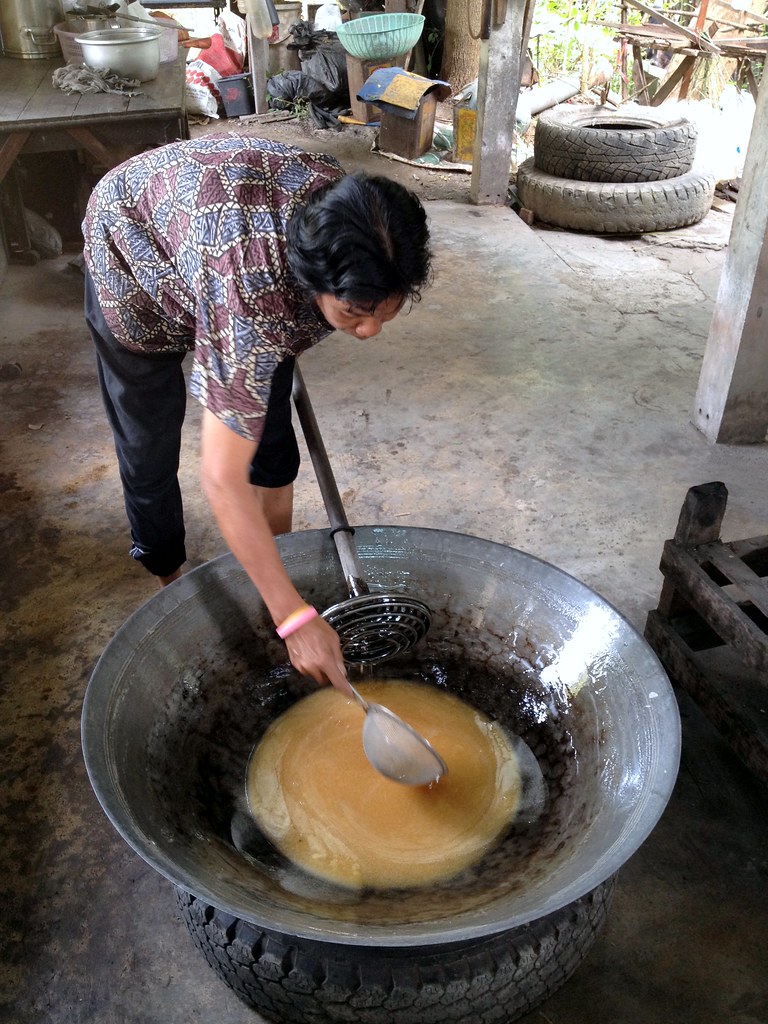
The will then place the wok onto a tyre, stirring it to let it cool for a while to reach the right thickness.
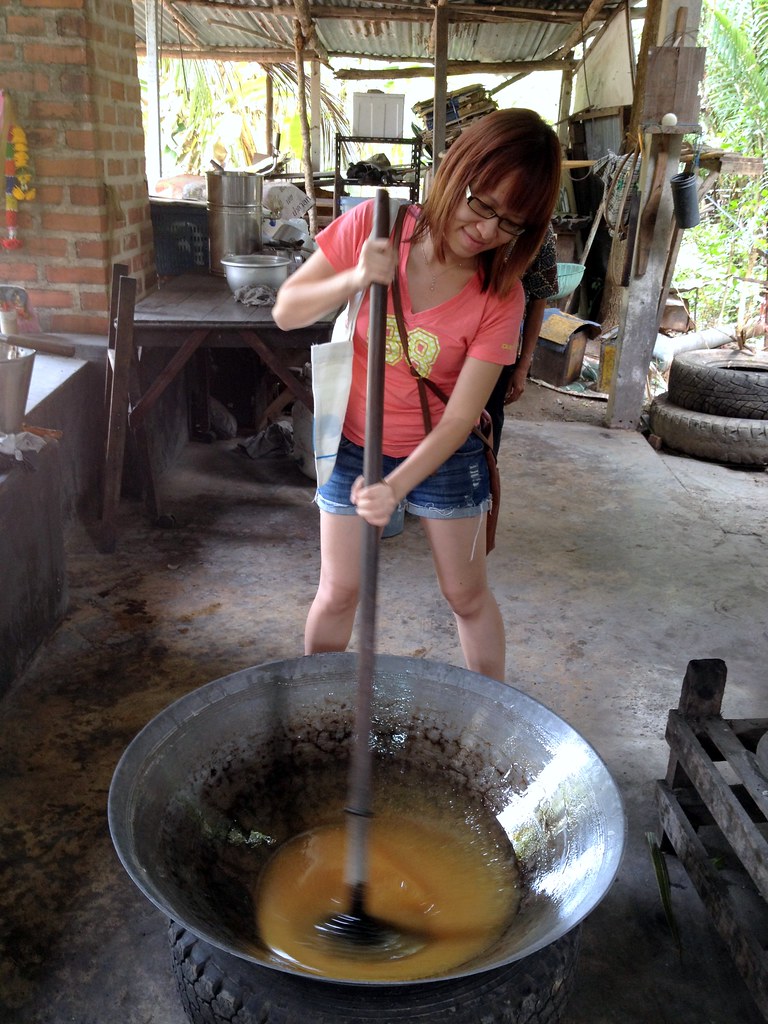
Meanwhile, we helped to stir too. As you can see, the handle is actually very heavy for me and I can only stir once and pose for photo! 😀
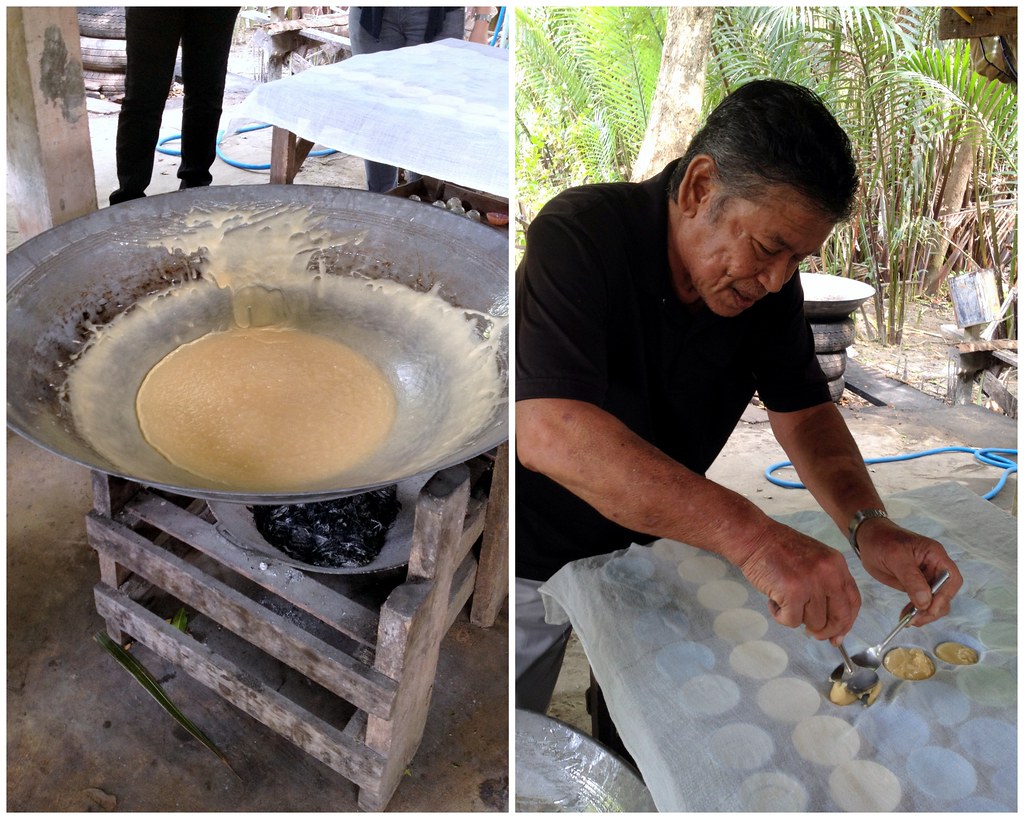
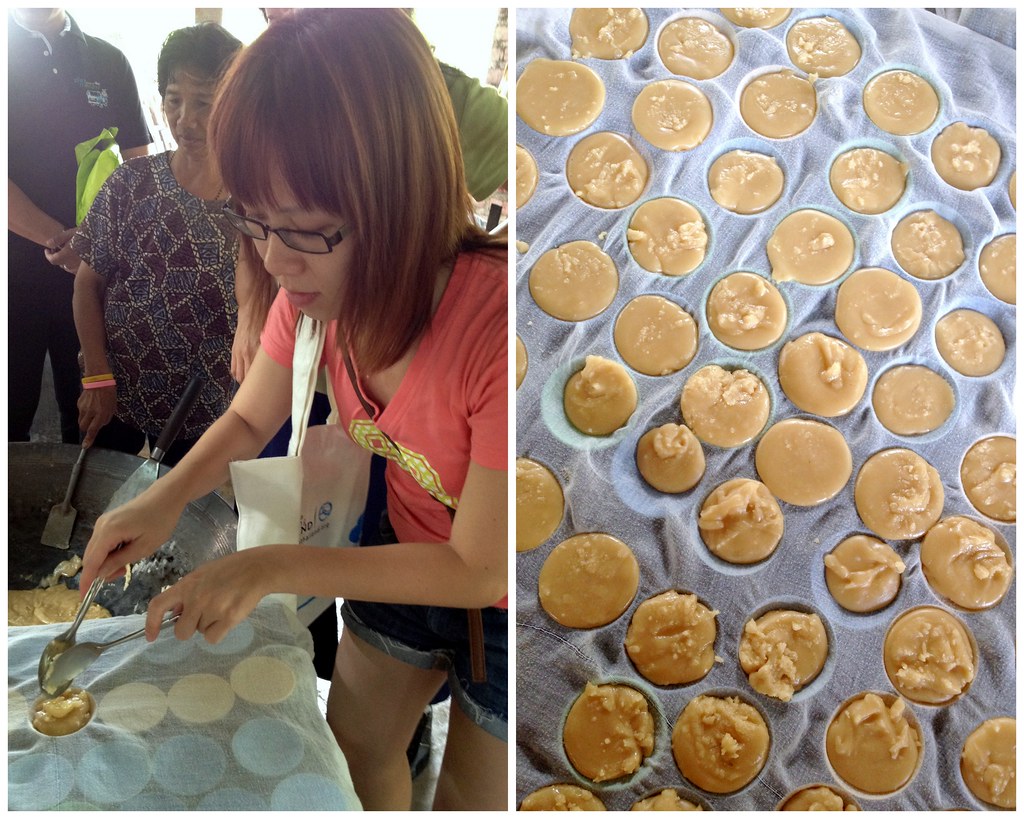
When it reaches the desired thickness, it is being poured into bowls covered with cloth to form cylindrical shapes. This has to be done quickly to prevent the palm sugar from drying up.
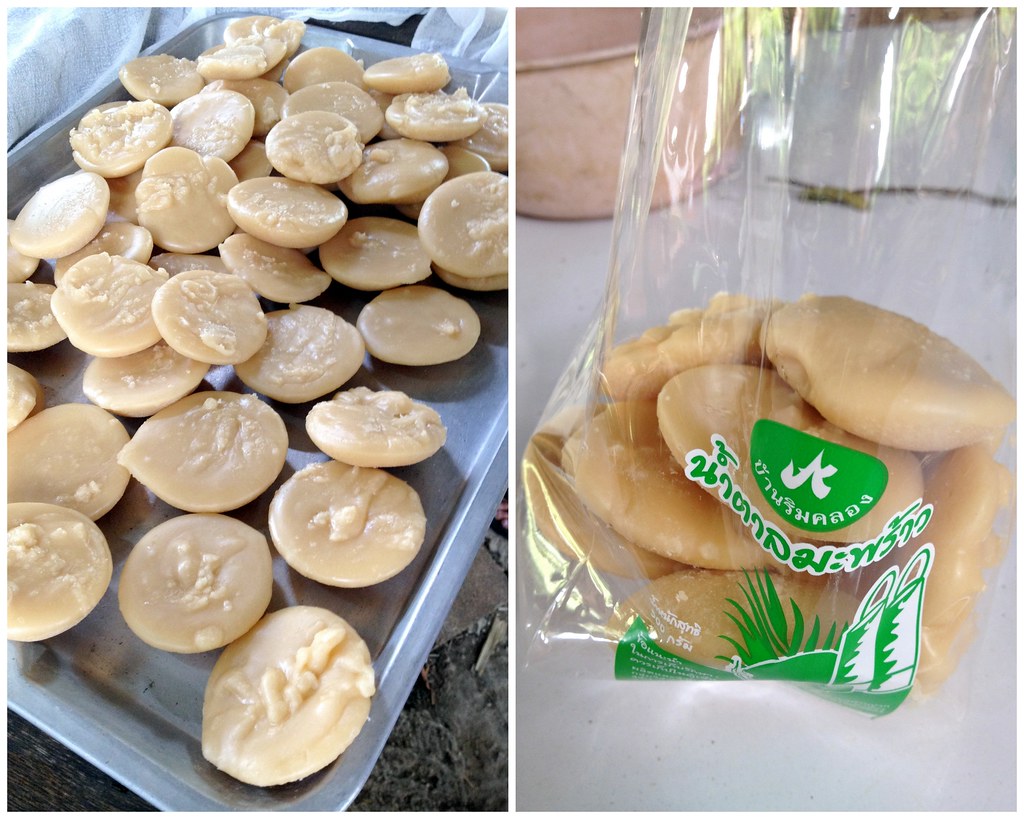
When sugar dries up, it is scraped and packaged. Palm sugar is sold in rounded cakes, cylinders, blocks or large plastic or glass jars. This sugar, even when soft, can be extremely dense and very sticky. A big wok like that allows them to make about 5kg palm sugar.

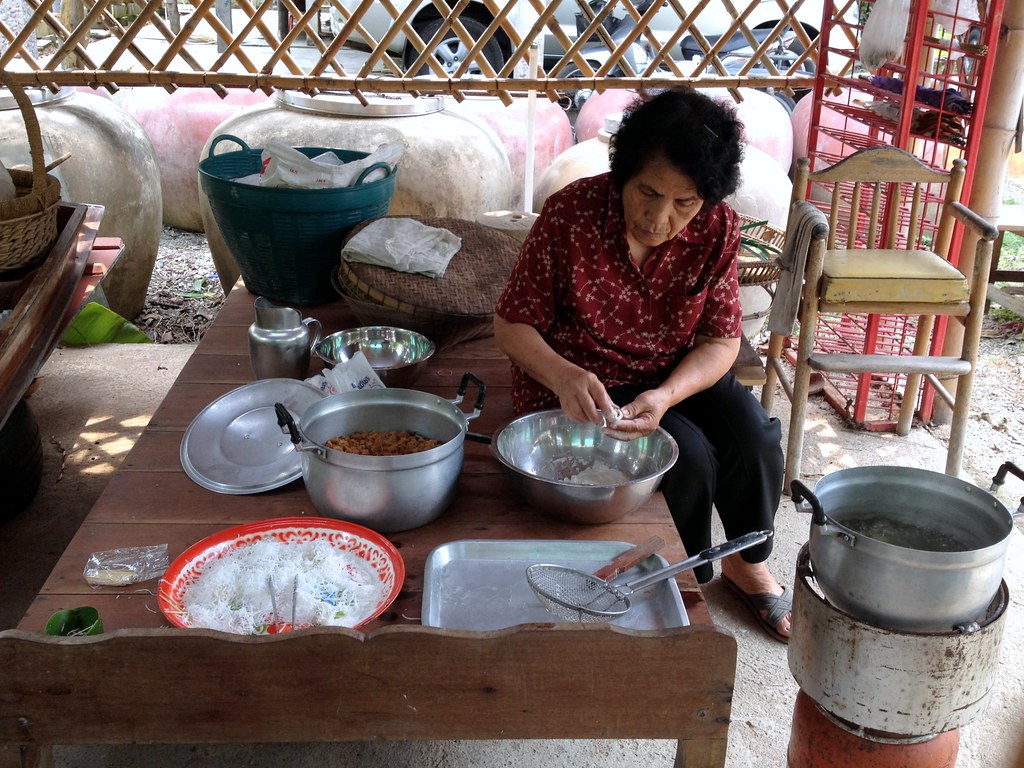
After helping out with the palm sugar making, we went the dining hall of Baan Rim Klong to watch the aunty make Kanom Tom. This is a Thai dessert made from sticky rice flour and palm sugar.
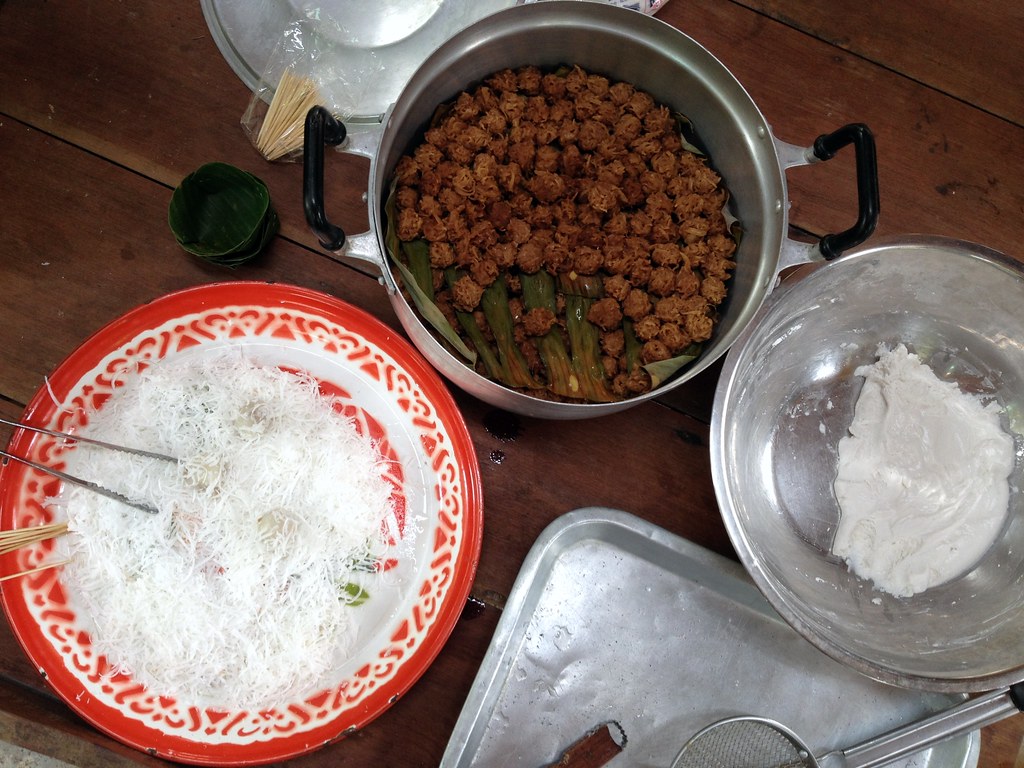
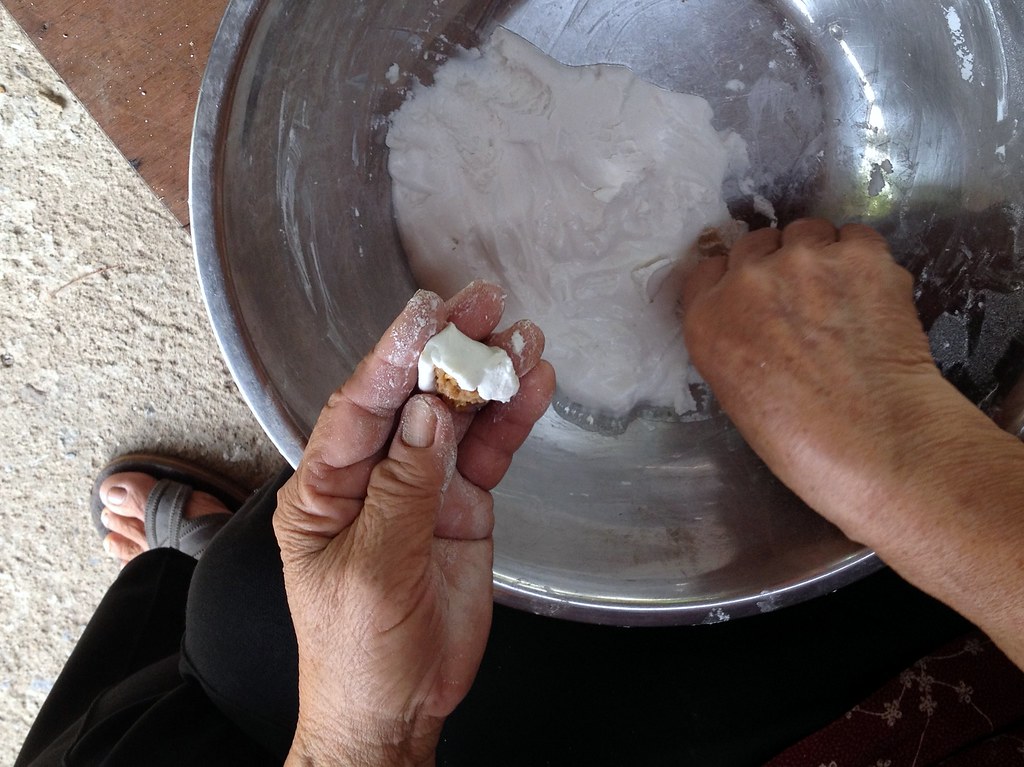
The brown balls are actually brown sugar. They are wrapped with glutinous rice flour.
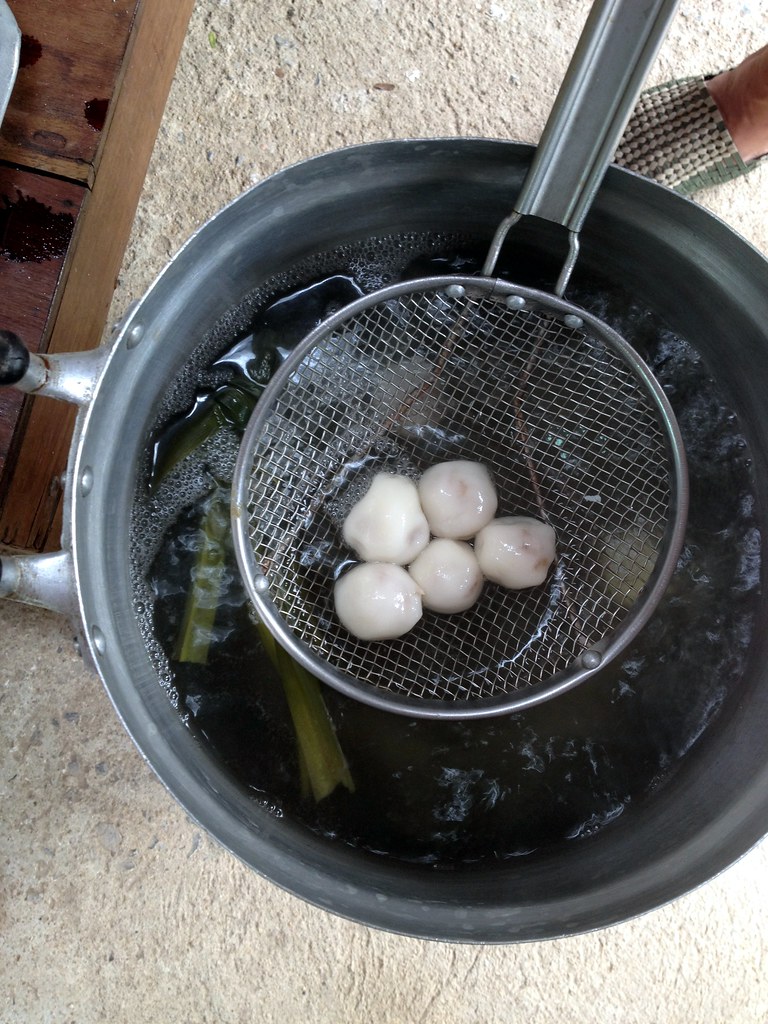
They are then cooked in a hot pot of water with pandan leaves.

They grow their own pandan leaves where they will cut and make them into a basket to place the desserts.
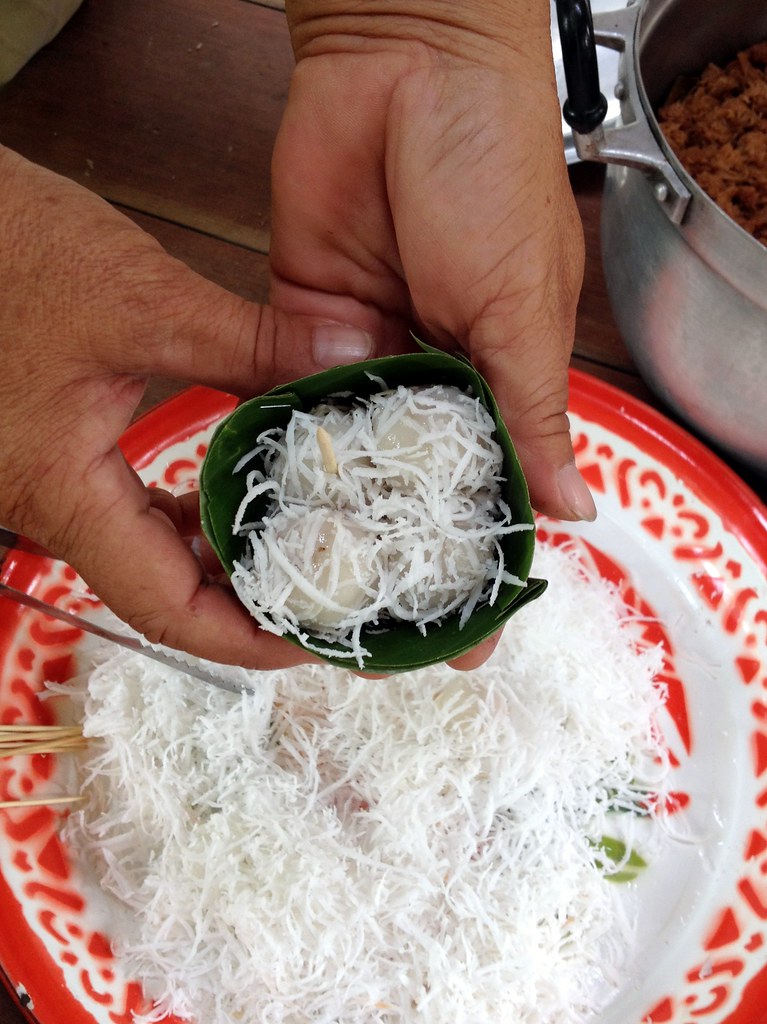
Once the glutinous rice balls are ready, they scrape the coconut flesh out from the coconut using a spoon and scope some onto the dessert. The combination of the soft, fluffy outside and the crunchy inside was amazing.
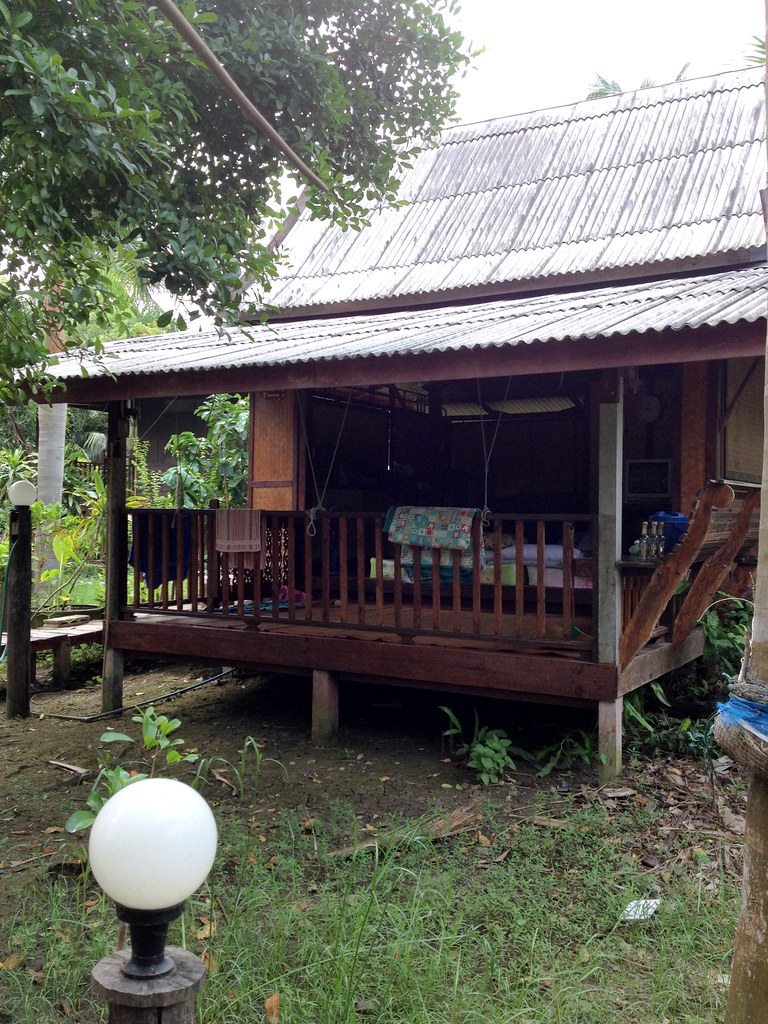
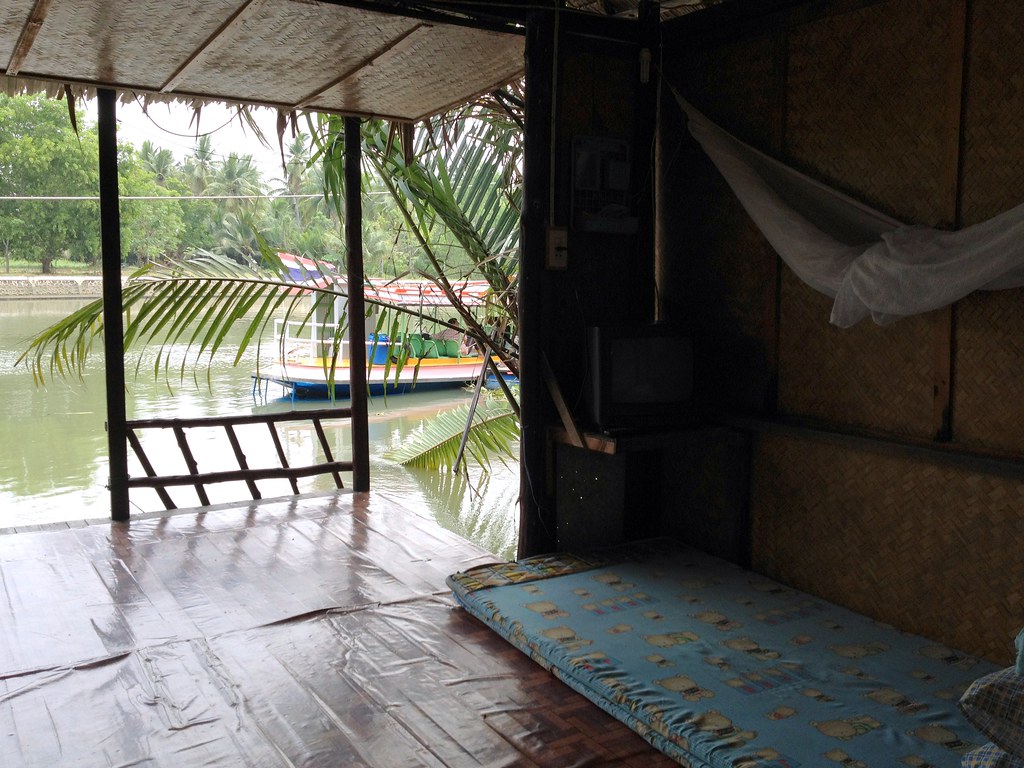
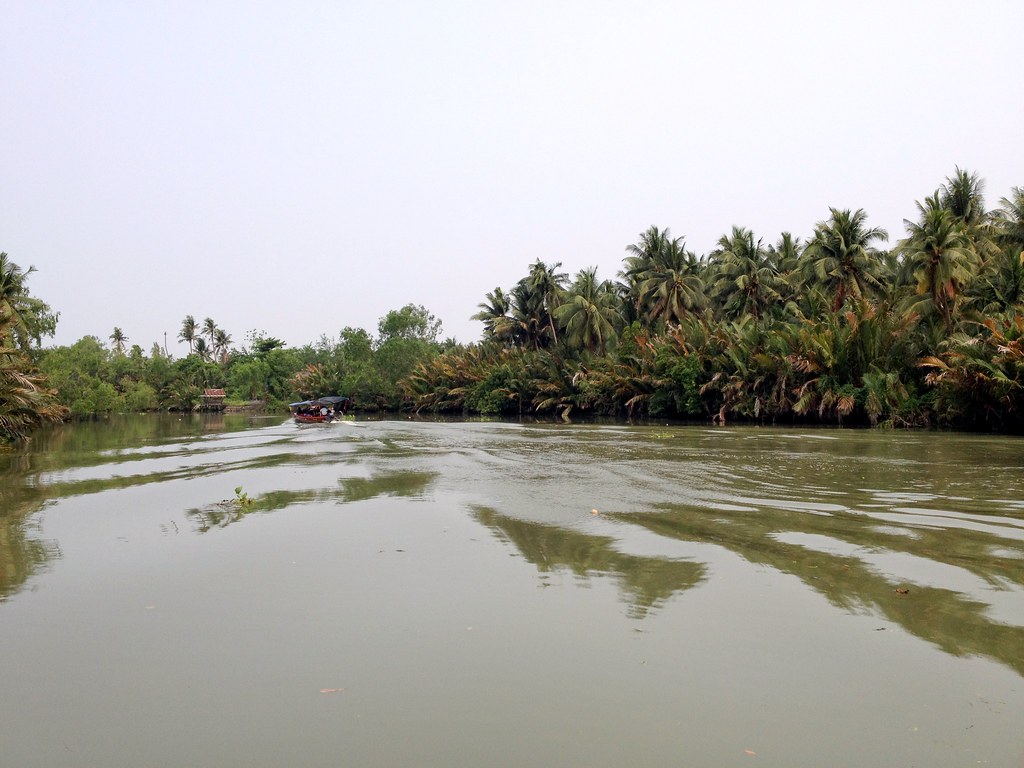
Baan Rim Klong also offers homestay services, so you can spend a night here while helping out with the palm sugar and dessert making.
For more information, visit http://baanrimklongresort.com



